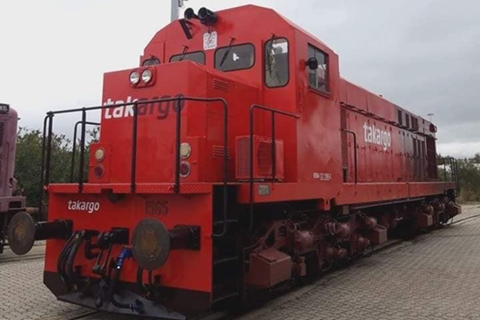
PORTUGAL: Rail Logistics Europe has purchased private freight operator Takargo from the Mota-Engil construction group, subject to formal approval by the competition authorities.
Founded in 2006 as part of Mota-Engil’s diversification strategy, Takargo was the first independent operator to apply for paths on the Portuguese network following liberalisation of the European rail freight market. The company has around 100 employees and reported a turnover of €16m in 2021.
RLE, which operates in various countries under the Captrain brand, has been working to develop rail freight traffic between the Iberian peninsula, France and other European destinations. The SNCF subsidiary acquired a 25% stake in Comsa Rail Transport in 2013, and took full control in 2018, when the business was rebranded as Captrain España. The operator has recently begun deploying Stadler-built Euro 6000 locomotives on the cross-border Perpignan – Figueras route between France and Spain.
Comsa Rail Transport began working with Takargo in 2009, establishing the Ibercargo Rail alliance to boost rail freight between Spain and Portugal. The two operators sought to implement an international corridor approach, with the training of drivers to work in both countries and the introduction of Euro 4000 diesel locomotives authorised for both.
RLE said the integration of Takargo into the Captrain network would strengthen the business, opening up opportunities through Captrain’s wide geographical reach and ‘vast portfolio of customers and services’. It hoped that this would help to decarbonise the Iberian logistics market, which is currently dominated by road transport.
‘With Takargo, Captrain intends to pursue the development of its network and strengthen its position in the Iberian Peninsula, capitalising on a fruitful 13-year partnership between the Portuguese company and Captrain España’, explained RLE President Frédéric Delorme. ‘Takargo will also allow us to support the need for carbon-free solutions on the Atlantic corridor for our customers’ conventional and combined traffic.’

















